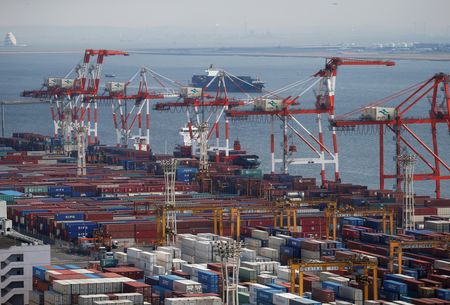
By Tetsushi Kajimoto
TOKYO (Reuters) – Japan’s imports surged by more than half in October from a year earlier, dwarfing exports and delivering another trade deficit, which has weighed heavily on the yen and added upward pressure to costs of living and doing business.
The trade gap reflects the pain felt by households struggling to make ends meet amid price hikes of everything from food to fuel, while squeezing profits at import-reliant companies facing difficulty of passing on costs to their clients.
Japan’s exports grew 25.3% year-on-year in October, led by shipments of cars, chips and electronics parts, up for the 20th consecutive months following a 28.9% gain in September, the trade data showed.
Imports jumped 53.5% in their 21st month of gains, driven by crude oil, coal and liquefied natural gas and resulting in a 2.16 trillion yen ($15.50 billion) trade deficit, a record for the month of October.
The world’s third-largest economy has depended on exports of processed goods such as cars and electronics for growth over the past few decades. Now Japanese policymakers are concerned more about the impact of surging imports on its resource-poor economy given the sharp yen declines.
By destination, Thursday’s trade data showed U.S.-bound exports rose 36.5% year-on-year in October, driven by cars and motors.
Exports to China, Japan’s No. 1 trading partner, advanced 7.7% in October, led by cars and audio equipment. The slowdown likely raised concerns about the impact of zero-COVID measures on Japanese shipments and the broader global economy.
Government data showed on Tuesday that Japan’s economy shrank in July-September for the first time in a year as imports outpaced exports, knocking off substantial portion of GDP.
($1 = 139.3300 yen)
(Reporting by Tetsushi Kajimoto; Editing by Sam Holmes)

